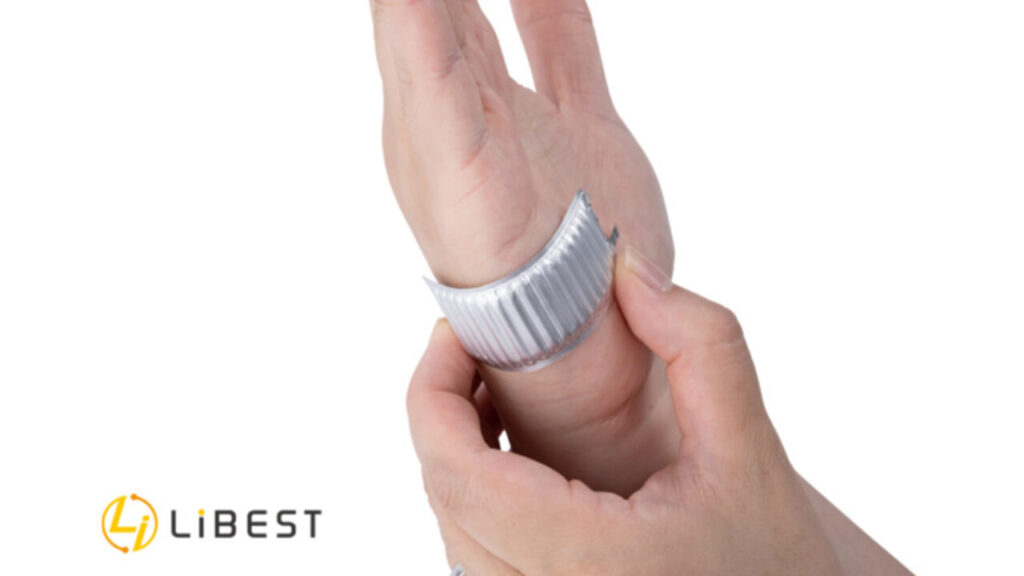We began December anticipating that there will be intriguing happenings to discuss in our summary post. And we were not let down. So, to begin, Sony Reveals New Lightweight Motion Trackers for VR. And Elon Musk’s Neuralink has been making headlines this week, as he recently declared that he will be implanting the goddamn chip into his own brain. He’s clearly insane these days, and while all of this is going on, we’ve got LiBEST, which is all prepared to Reveal Flexible Battery Metaverse Device.
So, let’s kick off this month with another collection of incredible AR/VR news! Let’s take a look at the most exciting developments in immersive reality…
1.Sony Reveals New Lightweight Motion Trackers For VR

Sony will also make available an SDK that will allow you to incorporate motion capture data into 3D animation software. Remember the Sony Walkman’s influence on music? The revolutionary technology let you to listen to your favourite music on the fly. Sony has now returned with yet another game-changing portable, the Mocopi motion capture technology.
The six brightly coloured and individually labelled motion-tracking bands are worn on your feet, wrists, head, and back, and each sensor is Bluetooth-connected to your smartphone. They will then record your motions and offer you with a range of data points that you may utilise in YouTube films or social VR sites such as VRChat.
Mocopi also includes a software development kit, which allows you to import your captures into 3D animation tools and other 3D software. Mocopi will also be compatible with platforms such as Unity and Autodesk’s MotionBuilder, an animation and motion capture tool. According to the corporation, this will enable you to establish new services relating to fitness, the metaverse, and other topics. It is entirely up to you how you employ them.
Sony appears to have prioritised portability with the Mocopi’s lightweight design. Each of the six sensors is 11.6mm thick and may be clipped or velcro-banded to your head, wrist, ankles, and hip. Typically, motion capture is seen in major Hollywood films. Sony’s entrance, on the other hand, makes it easier for normal YouTubers to create their own animated videos. On the professional front, the Mocopi might aid filmmakers and animators in capturing lifelike motions in a matter of minutes.
Each sensor has a battery life of up to 10 hours and can be charged using a normal USB-C cord. The gadget is also dustproof and waterproof, and it works with most iPhone models running iOS 15.7.1 and any Android handset running Android 11 or above. The Mocopi sensors do not require any form of external tracking equipment, such as a base station, because they link to your mobile smartphone. What is unknown is if Mocopi will track and record using a special iOS and Android app.
“VRChat has lead the industry in complete tracking with PC VR headsets.” “With the release of Sony’s’mocopi,’ we are happy to be able to provide the same capability for standalone VR headsets,” stated Jesse Joundry, CTO and Co-Founder of VRChat. “There are several VR
headsets available on the market. We want users of all headsets to be able to fully enjoy VRChat’s tracking capability in conjunction with’mocopi.'”
The Sony Mocopi will be available in Japan beginning in January 2023 for 49,500 yen ($360 USD) through Sony’s specialised retailers. It is unclear when the gadget will be accessible in other locations or whether it will be compatible with Sony’s PSVR 2. However, it is compatible with both PC VR headsets and the Meta Quest 2 game.
2.‘Super Smash Bros’ Creator Masahiro Sakurai Says VR is “Truly the perfect fit” for Some Games

Masahiro Sakurai has a distinguished career in game development. Though he is most known as the developer and director of the Super Smash Bros series, the first game was really his fourth game. He originally got his start in 1992 with another well-known franchise… Kirby.
Sakurai, who has 30 years of expertise, just launched his own YouTube channel to share his game design philosophy with the globe. Masahiro Sakurai on Creating Games is a series that covers everything from game pitching to game design to managing a dev team in bite-sized films that are short, pleasant, and intended for budding devs.
Sakurai mentioned VR briefly in one of his recent films on selecting the best field-of-view for a certain game. Speaking on VR’s pros and weaknesses, he finally invites his viewers to play VR racing games to get a sense of what a VR headset can provide in terms of field-of-view and immersive first-person viewpoint.
Sakurai hasn’t developed any VR material while obviously enjoying the unique experience that a VR headset can provide to a game. According to NintendoLife, Oculus offered Sakurai a contract to produce a VR game in 2015, but he rejected due to the medium’s modest audience size. While the VR audience is still small in comparison to conventional gaming, it has grown dramatically since 2015; I wonder what Sakurai would think of the VR world now.
3.Neuralink “Show & Tell” Coming on November 30th, Hints at Thought- controlled Typing

Elon Musk’s Neuralink brain-machine interface (BMI) startup has been rather silent since it last demonstrated a live trial of the company’s implant in a macaque early last year. Despite being slated for October 31st, Musk claims a “show and tell” upgrade will be released on November 30th.
The event is scheduled for November 30th at 6:00 PM PT (local time here). In an announcement, the company’s Twitter page hinted to this year’s version, which looks to be centred on text input.
According to the company’s application FAQ, clinical trials have not yet commenced, while BMI text input may be tough to show in non-human individuals, so we’ll have to wait and see. Neuralink, like many of Musk’s firms, has ambitious aspirations. The business claims it intends to aid people with paralysis and neurological illnesses and disorders in the short term and “lower AI danger to mankind in the long run.”
Here’s a brief rundown of what happened to get you ready for Wednesday’s show and tell: – Elon Musk Unveils Neuralink & Outlines Prototype N1 Sensor in July 2019
– Neuralink Demonstrates Rudimentary Limb-tracking through Brain-Interface in Live Pigs in August 2020
– Neuralink reveals a monkey playing ‘Pong’ with only its brain in April 2021.
– Neuralink raises $205 million in Series C funding in July 2021.
4.LiBEST to Reveal Flexible Battery Metaverse Device

South Korean start-up LiBEST has collaborated with humanoid robotics company Mand.ro to create a metaverse gadget that will use the former’s flexible rechargeable batteries. Both parties intend to unveil the collaborative endeavour on January 5, 2023, at the Consumer Electronics Show. Among the collaboration’s products are the Exo-Sensor and Exo-Skeleton Gloves. The former gives wireless robot arms motion orders, while the latter augments human strength.
The solutions were created by the firms, with LiBEST merging its battery technology with Mand.ro’s electronic prosthetic limb, which includes ultra-small motor and gear solutions. In addition, the corporations have collaborated with international experts to increase the endurance of battery components used in metaverse devices. Designers may create battery- powered gloves for the forearms, fingers, wrists, and other body parts, as well as wearable bracelets and rings.
Furthermore, LiBEST has created smaller, thinner form factors with changeable sizes. It intends to produce wearable batteries that detect human activity and allow remote gadgets to be controlled regardless of location. The announcement comes as industrial and commercial metaverse devices continue to develop with a slew of new options. Companies like SenseGlove, Meta Platforms, PrecisionOS, and HaptX have pioneered haptic gloves capable of manipulating and detecting things hundreds of kilometres distant with near-zero latency.
The ReSkin technology from Meta Platform has the potential to bring open-source haptic glove solutions to the worldwide market for a tenth of the cost of business versions. This will also serve as a platform for companies to design custom haptic technology products for their enterprises.
Metaverse Device Push from South Korea
South Korean companies and universities have begun to create next-generation haptics and motor technologies. A paper on augmented reality (AR) wearable devices that utilise artificial muscle actuators was recently released by Samsung researchers. The study, co-authored by Samsung Research and Ajou University, details plan to produce actuators controlled by AR- powered smart glasses and haptic gloves.
Ulsan National Institute of Science and Technology (UNIST) has also developed haptic gloves that sense head and vibration. The 3D-printed gadgets track hand and finger motions in real time by combining liquid metal with precise motor sensors. To increase immersion in XR experiences, the gadgets might be used for gaming, training, remote devices, and virtual reality (VR) controllers. Initially, users could feel a variety of sensations while emulating wood, metal, fire, and other materials.
We at twin reality are working on future of metaverse projects and mainly focusing on the AR/VR part of it and we also provide business solutions to all your queries related to AR/VR make sure you visit our website for more info about it.

